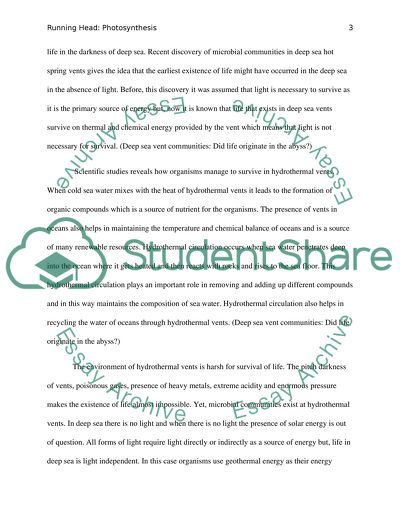Cite this document
(“Photosynthesis deep within ocean waters Essay Example | Topics and Well Written Essays - 4250 words”, n.d.)
Retrieved from https://studentshare.org/environmental-studies/1393129-photosynthesis-deep-within-ocean-waters
Retrieved from https://studentshare.org/environmental-studies/1393129-photosynthesis-deep-within-ocean-waters
(Photosynthesis Deep Within Ocean Waters Essay Example | Topics and Well Written Essays - 4250 Words)
https://studentshare.org/environmental-studies/1393129-photosynthesis-deep-within-ocean-waters.
https://studentshare.org/environmental-studies/1393129-photosynthesis-deep-within-ocean-waters.
“Photosynthesis Deep Within Ocean Waters Essay Example | Topics and Well Written Essays - 4250 Words”, n.d. https://studentshare.org/environmental-studies/1393129-photosynthesis-deep-within-ocean-waters.


